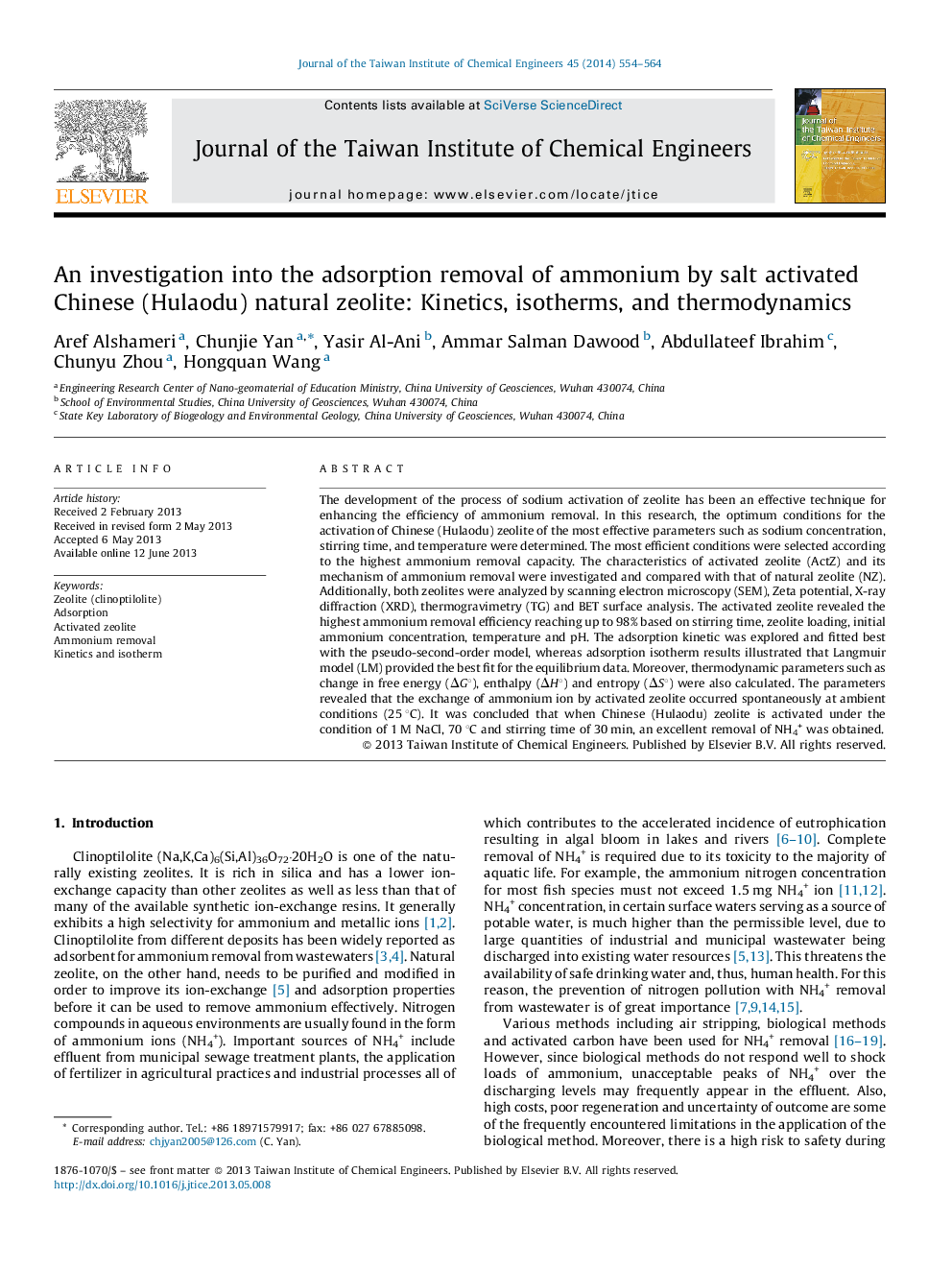| Article ID | Journal | Published Year | Pages | File Type |
|---|---|---|---|---|
| 691395 | Journal of the Taiwan Institute of Chemical Engineers | 2014 | 11 Pages |
Abstract
The development of the process of sodium activation of zeolite has been an effective technique for enhancing the efficiency of ammonium removal. In this research, the optimum conditions for the activation of Chinese (Hulaodu) zeolite of the most effective parameters such as sodium concentration, stirring time, and temperature were determined. The most efficient conditions were selected according to the highest ammonium removal capacity. The characteristics of activated zeolite (ActZ) and its mechanism of ammonium removal were investigated and compared with that of natural zeolite (NZ). Additionally, both zeolites were analyzed by scanning electron microscopy (SEM), Zeta potential, X-ray diffraction (XRD), thermogravimetry (TG) and BET surface analysis. The activated zeolite revealed the highest ammonium removal efficiency reaching up to 98% based on stirring time, zeolite loading, initial ammonium concentration, temperature and pH. The adsorption kinetic was explored and fitted best with the pseudo-second-order model, whereas adsorption isotherm results illustrated that Langmuir model (LM) provided the best fit for the equilibrium data. Moreover, thermodynamic parameters such as change in free energy (ÎG°), enthalpy (ÎH°) and entropy (ÎS°) were also calculated. The parameters revealed that the exchange of ammonium ion by activated zeolite occurred spontaneously at ambient conditions (25 °C). It was concluded that when Chinese (Hulaodu) zeolite is activated under the condition of 1 M NaCl, 70 °C and stirring time of 30 min, an excellent removal of NH4+ was obtained.
Keywords
Related Topics
Physical Sciences and Engineering
Chemical Engineering
Process Chemistry and Technology
Authors
Aref Alshameri, Chunjie Yan, Yasir Al-Ani, Ammar Salman Dawood, Abdullateef Ibrahim, Chunyu Zhou, Hongquan Wang,
